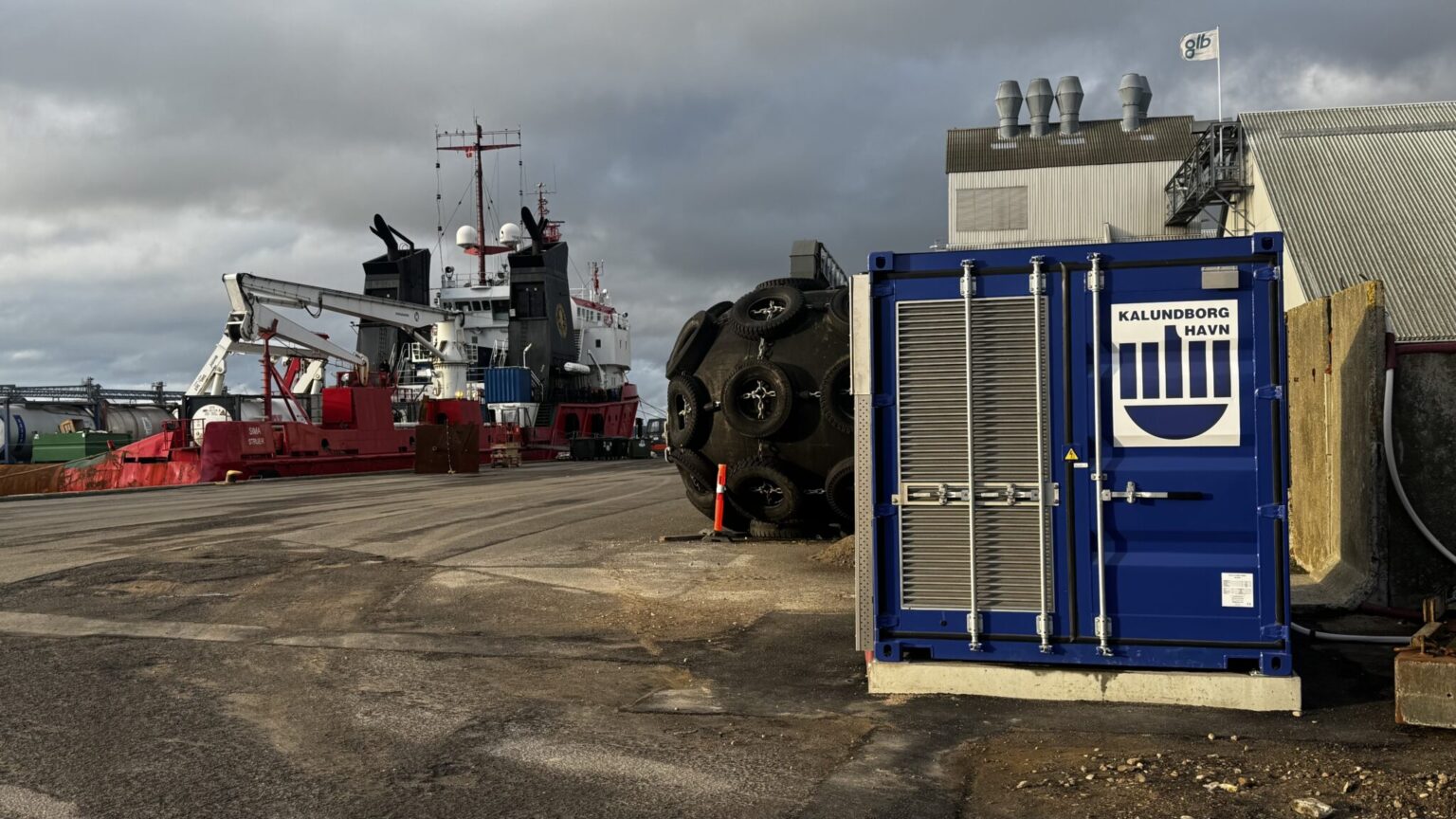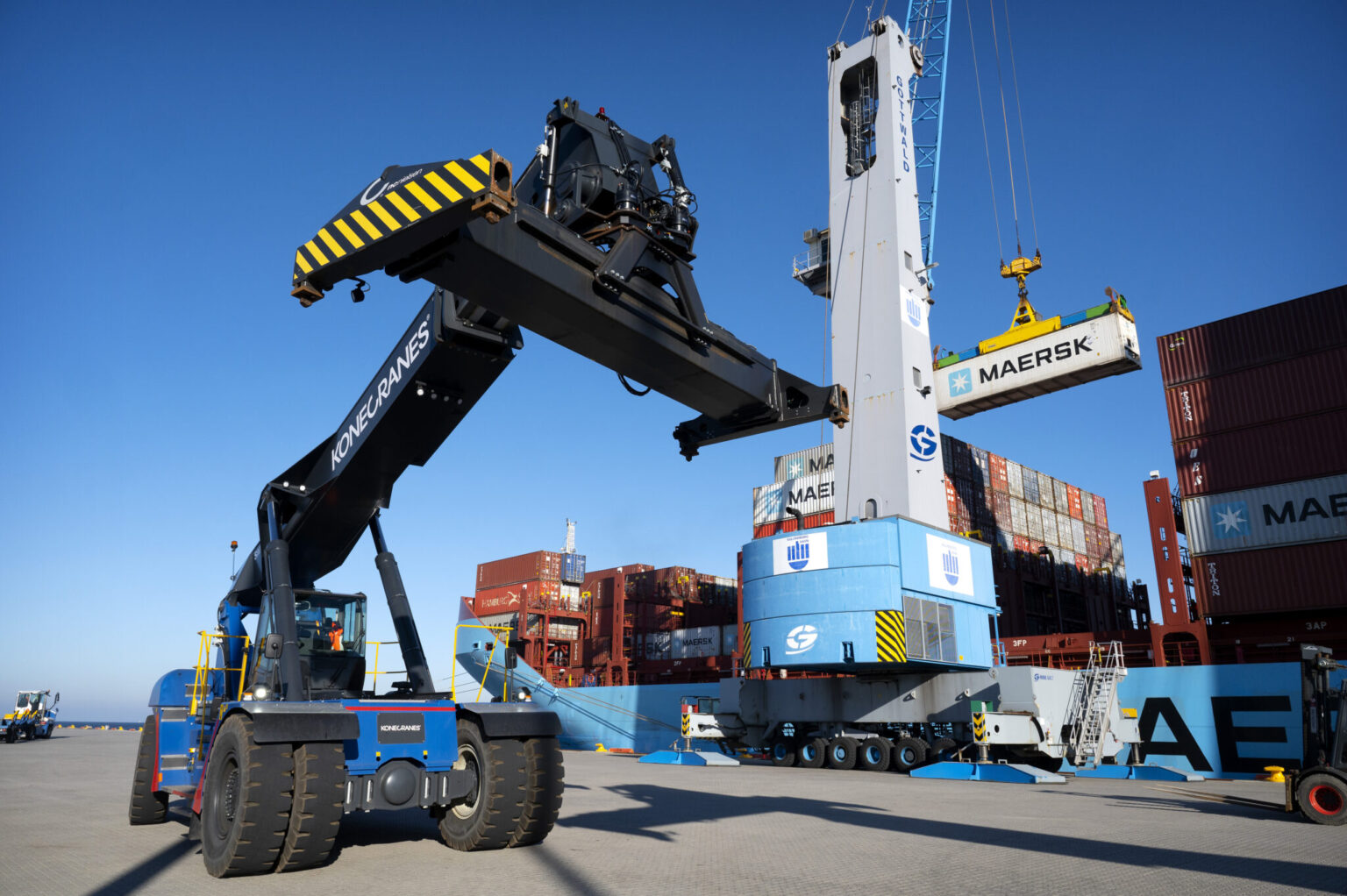In early December, the Port of Kalundborg commissioned their new shore power plant in the East Harbour. The plant enables lay-up vessels, which previously ran on diesel generators while in the port, to now be supplied with electricity directly from the quay. This reduces the emission of both CO2 and other harmful particles, which improves the air quality in and around the port area.
More ships on shore power means fewer emissions
The shore power project has been two years in the making and originally planned for each of the two technical modules to be installed to be able to connect to a single ship at a time. It has since been shown that the system has a greater capacity than initially assumed, so it is now possible to connect up to three ships simultaneously.
“Being able to offer shore power to more ships than expected is a significant improvement to our facilities, and it underlines the value of our investment in the facility. It brings us one step closer to our goal of greener port operations,” says Port Director Bent Rasmussen.
"From PowerCon's side, we are incredibly proud to have delivered shore power plants to the Port of Kalundborg and thus contributed to the green transition. We would like to thank the team from the Port of Kalundborg for the good cooperation and praise them for showing the way towards a more sustainable future," says Sales Manager, Jacob Bjarkam from PowerCon, who was the supplier of the shore power plant.
Economic benefits should push ships onto shore power
A key part of the incentive to move shipping companies to shore-based power is the low electricity tax of just 0.4 øre per kWh. The scheme runs until 17 June 2027 and is designed to make it economically attractive for ships to choose shore-based power over traditional fossil fuels, as it is both better for the environment and more economical for the ships' operations.
“The low electricity tax makes shore power a lucrative solution for ships, and we see it as an important lever for creating a real shift in shipping towards more sustainable energy sources,” says Bent Rasmussen and continues: “We are proud to be among the ports that actively contribute to the maritime green transition. The Port of Kalundborg is helping to set the standard for future port operations.”
When ships in port are connected to shore power, their fuel consumption is significantly reduced. This results in lower costs for purchasing fuel and also puts less wear on the diesel generators. It also means fewer costs for maintenance and repairs.
A stronger position in the green transition
The increased capacity of the shore power plant is an important strength at a time when the EU's regulation on sustainable fuels is expected to increase demand for electricity from quayside. This makes the Port of Kalundborg future-proof in the even longer term.
"With our new plant, we can better meet the increasing demand for shore-side power that we expect towards 2030 in line with EU requirements. This supports our ambition to be at the forefront of the green transition and create value for our customers," concludes Bent Rasmussen.
Currently, up to 40 % of the ships can receive shore power, and therefore the Port of Kalundborg can potentially connect up to 28 ships per year to shore power compared to the port's current call activity in the East Harbor, which is expected to increase in the coming years.



